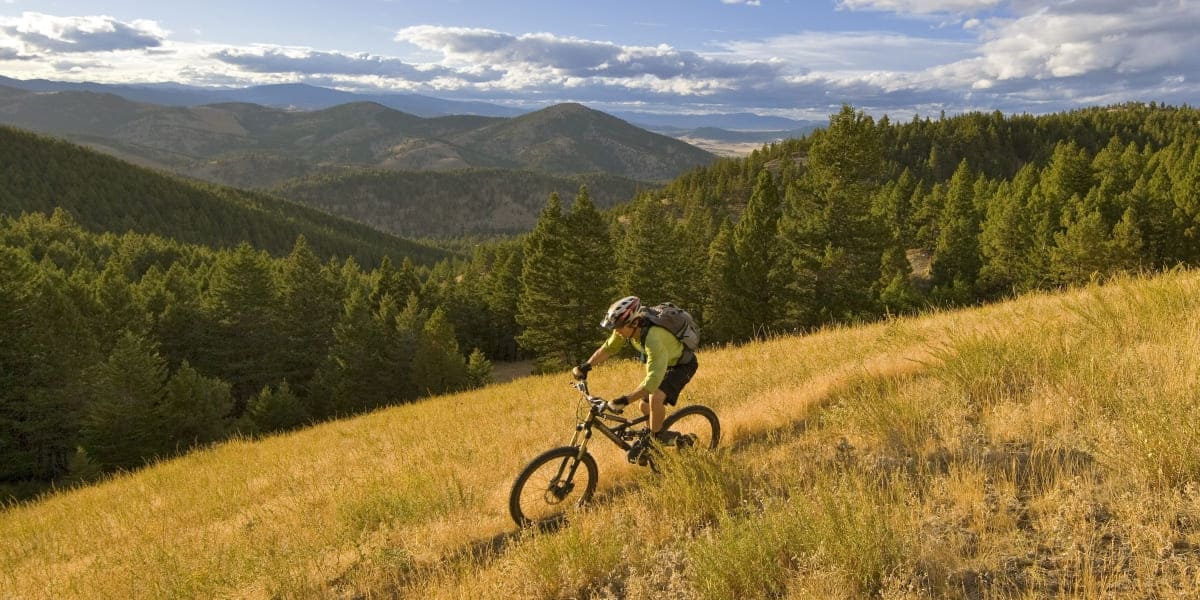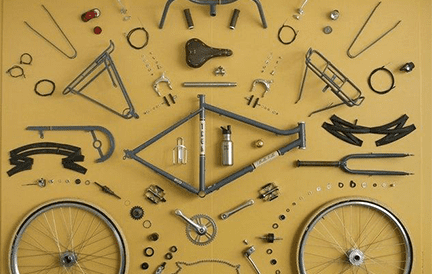For such a simple bicycle part, finding the right MTB crank for you can be quite difficult. Hopefully, this article may help steer you to the right choice and answer most of the questions running through your mind. We will start from the fundamentals for those who are new. Cranks are the components that transmit power from the pedal to the chainring. There are two cranks in a bike, left and right, connected to the pedals and each other through the bottom bracket axle.
- Part 1: Choosing Your MTB Crank
- Part 2: Do MTB Crank Lengths Make A Difference
- Part 3: Cranksets for Moutain Bikes
- Part 4: Why You Should Upgrade Your MTB Crankset
- Part 5: When You Should Change Your Mountain Bike Cranks
- Part 6: Are MTB Cranks Universal
- Part 7: MTB Crank Arms
- Part 8: The Best Crank Length for Cycling
- Part 9: The Best MTB Cranks and Choosing Between SHIMANO and SRAM
Part 1: Choosing Your MTB Crank
When choosing your MTB Crank, certain factors should be taken into consideration: Your height, riding style, the Q factor, and the weight of the MTB cranks.
Height
Choosing the length of your MTB crank based on the height of the cyclist is a standard in cycling. Some choose crank length based on crotch height. Riders with legs shorter or longer than the average may feel more comfortable on cranks that suit their measurements.
Riding Style
This is an important aspect of choosing the right crank. The discipline you will most likely ride is to be taken into consideration. There are different forms of mountain biking; Enduro, all mountain, cross country marathon, trail, downhill, and so on.
If you do a lot of cross country riding, a lightweight carbon crank is the best option for you to achieve maximum performance.
A titanium crank might be a better option if you are into downhill oriented riding style, it is more durable and has less risk of breaking in case of a rock strike.
For trail and enduro, 170mm crank arm length is the most commonly used and is recommended to keep a good leverage ratio and more ground clearance due to having more travel.
The Q Factor
The Q Factor Is essentially the crank width. It is the distance between the outer surfaces of the crank arms, and how far apart the pedals are. Crank size affects your pedaling rate. The longer the crank, the more difficult it will be to maintain a high pedaling rate.
Not choosing the right Mtb cranks may affect your health negatively by lengthening your quads, diminishing power, and physical performance. You can also end up with tendinitis.
The Weight of The Crank
As with other mountain bike parts, the more you spend the lighter it gets. Cranks are formed from three materials- titanium, carbon, and aluminum. Each of these materials has its advantages and disadvantages. Titanium is the most expensive and lightest. Titanium cranks are ultra-firm, efficient, and durable.
Carbon cranks being just below the titanium cranks are stiffer and shed a lot of weight. The extra stiffness increases power delivery and reduces flex to improve the responsiveness of driving the bike through turns and features.
Although, most riders can’t tell the difference.

Part 2: Do MTB Crank Lengths Make A Difference
If you are curious as to whether crank lengths make a difference, the answer is yes! Although your crank length has no effect on the maximal power on the road, Crank length can influence a number of things. It affects how you generate pedaling force and your overall comfort on your bike. Too long or too short cranks can be as bad as faulty ones.
A Longer crank might allow you to climb better because it is a low gear ratio, its effect is less than significant.
Shorter cranks will enable riders to be more comfortable on their bikes, aiding mobility and clearance grounds for pedals. They matter for aerodynamic riding.
Shorter cranks aid acceleration and are quicker to accelerate up to maximal power, shorter cranks can also help with opening up your hip angle whilst pedaling, making it easier to pedal through dead spots at the top of your pedaling stroke.
Overall, shorter cranks are more beneficial to riders.
Part 3: Cranksets for Moutain Bikes
Cranksets are the part of your mountain bike that you pedal to move the bike forward. Cranksets, which is also called chainset comprises of the bottom bracket, two crank arms, the axle or spindle, and a single or double chainring. Crank length varies between 165mm to 180mm. The standard crank length is 170mm. High end cranksets are made from carbon fiber and titanium components and bottom brackets that increases the efficiency of power transfer and save weight. You can choose from a broad range of different cranksets options for your mountain bike.
Cranksets are relatively not hard to maintain, keeping them dry will help extend their life span. Lubricating your chainrings will help keep shifting smooth and quiet.
Part 4: Why You Should Upgrade Your MTB Crankset
Your mountain bike crankset is worth upgrading. But if you like what you have, there is no reason to upgrade. The main purpose of upgrading your mountain bike crankset is for performance improvement.
Cranksets need to be upgraded because of their weight, that is, you needing a lighter crank for more compatibility.
A key consideration when upgrading or replacing crank arms or cranksets is crank length. Most cranks for Mountain bike use are 175mm long, Options from 165mm to 180mm cover different limb lengths. It would be best to research what crank length is recommended for your inside leg measurement.
Upgrading your cranksets means improving stiffness, and getting much better materials and craftsmanship. Other benefits of better cranksets include making gear changes smoother.
Part 5: When You Should Change Your Mountain Bike Cranks
Generally, mountain bike cranks are long lasting. They can be used for years, even decades. If you don’t take care of them, they will fail. But before that happens the rider is more likely to retire or buy a new bike. Although, the chainrings and cassette can wear out. Once the chainring is wearing out, it’s best to also replace the cassette. You should replace your cranksets when you have problems shifting.
To answer the question “when should I change my MTB cranksets?”
When the Chain Skips
As said, when the teeth on your chainrings are wearing out, and they no longer engage with the gears, it’s best you replace your worn crankset.
When You Hear a Crunchy Noise while Peddling
If you hear a crunchy or charring sound while peddling, it is time to change your cranksets. Broken or worn teeth usually cause this on your chainrings
When the Chainrings Are Bent
If your MTB crank is made of aluminum there is a chance your crank could bend when you hit a rock.
Part 6: Are MTB Cranks Universal
Mtb cranks are not universal, every brand and model is unique from others. Cranksets are not always interchangeable. Each crank is for working with a specific bottom bracket. Mountain bike cranks are usually spaced wider than other bikes. When it comes to cranksets, every brand has its specifications.
Part 7: MTB Crank Arms
Crank arms act as a rotating crank, allowing the rider to apply force to the pedal transferred through the crank arm to the forward gears to drive the bicycle chain. These are the levers your pedals are attached to.
Part 8: The Best Crank Length for Cycling
The most common crank lengths are 170 to 175mm. Choosing the right crank length can help reduce the risk of injury and improve the mechanical performance of the pedal stroke. There isn’t a rule in choosing the best crank length for cycling, each rider responds differently to crank length. It is best to avoid extreme choices in crank length for amateurs and if you are to pick between two lengths, it is advisable to go for the shorter length.
Part 9: The Best MTB Cranks and Choosing Between SHIMANO and SRAM
When it comes to understanding the best mountain bike crank, crank materials range from the less expensive aluminum to carbon which is more expensive and lightweight, and in some cases titanium which is the most expensive. The more you spend on your cranks, the lighter the cranks, and the more durable and extra stiffness you enjoy.
The two leading mountain bike cranks are the SHIMANO SLX M7100 Crankset and the SRAM SX EAGLE DUB crankset.
SHIMANO and SRAM are the two dominant component manufacturers in the cycling industry. Both Shimano and SRAM have developed products that have moved cycling forward. These brands offer complete packages that put their products on many bikes as original equipment. Choosing between SHIMANO and SRAM can be a major decision. There’s no answer as to which one is better. We will shed light on the similarities and differences between both brands and their products.
Differences Between SHIMANO and SRAM Products
Shifters
SHIMANO uses the traditional two-lever system while SRAM uses double tap shifting, which uses one lever for shifting both up and down.
The shifting actuation ratio is different in both brands and their products SRAM shifts at a 1:1 ratio, meaning the cable moves further with each shift, making the product less sensitive to mud and influences like terrain.
SHIMANO shifts at a ratio of 1:2, which is light precise, and consistent. Gears work together with teeth to provide consistency and smoother shifting.
Crank Arms
Shimano uses hollow-forged crank arms. It is a hollow aluminum crank arm using joining two halves which decreases weight but maintains stiffness. The SHIMANO SLX cranks are solid, durable, less expensive, and user friendly.
SRAM on the other hand uses carbon fiber which is higher than steel strength and Carbon is mostly for high end cranks.
Brake Fluid
SHIMANO and SRAM brakes use different brake fluids. SHIMANO uses mineral oil while SRAM uses DOT 5.1 brake fluid. Mineral oil is hydrophobic, meaning it does not absorb the water in the air. The boiling point stays constant and never drops. It has a long shelf life. The introduction of water decreases the boiling point and reduces performance. DOT fluids are hygroscopic, meaning it absorbs water, except DOT 5 brake fluid which is silicone based.
Spindles
Shimano uses a HOLLOWTECH II spindle. And the concept of HOLLOWTECH II technology is providing the best balance of rotating performance, stiffness, weight, and strength SRAM uses DUB spindle. DUB meaning Durable Unified Bottom Bracket. It is a 28.99mm spindle for all mountain bike cranks. Also, DUB cranks are light, tested, and durable.
Gearing
SHIMANO still uses traditional gearing, which people has successfully used for decades. SRAM has recently challenged the traditional gearing and is using a new gearing system called X-range.
The X-range gearing system shrinks the chainring size and uses cassettes with 10- tooth cogs and smaller steps between cogs. It is for reducing front shifting.
SHIMANO and SRAM are not the only bike component manufacturers, there is a wide range of them to choose from, the reason for highlighting SHIMANO and SRAM is beacuse they are the two leading bike component manufacturers, and as said, there is no clear indicator that SHIMANO is better than SRAM or vice versa, both the SRAM and SHIMANO products are user friendly and have their advantages and disadvantages. Choosing which one is best for your bike is a thing of personal preference, priority, and what you can afford.
In conclusion, Mountain bike cranks are an important part of your bike, they are what make your bike a bike, knowing about your MTB crank, choosing the right crank, and picking the best crank for your mountain bike can make mountain biking an enjoyable experience.









